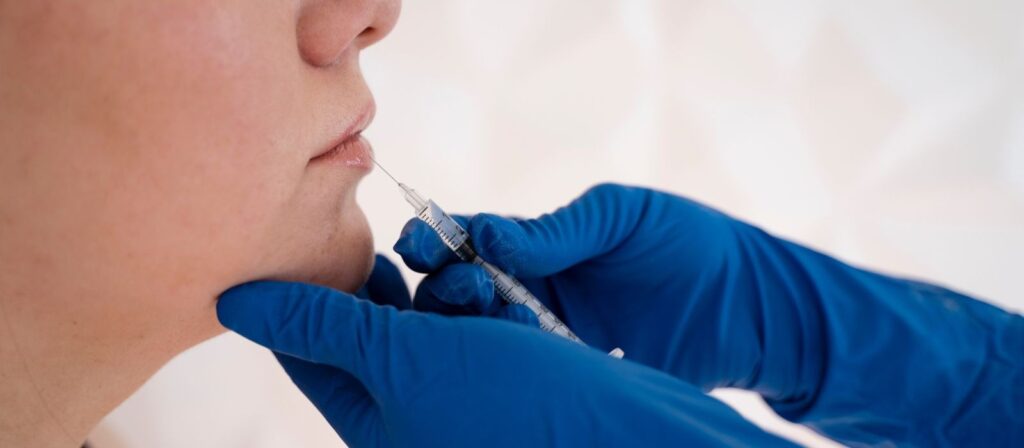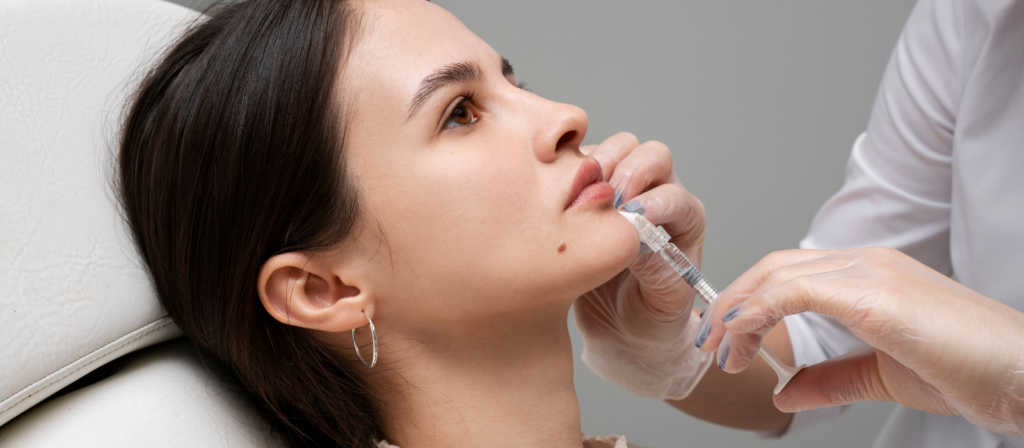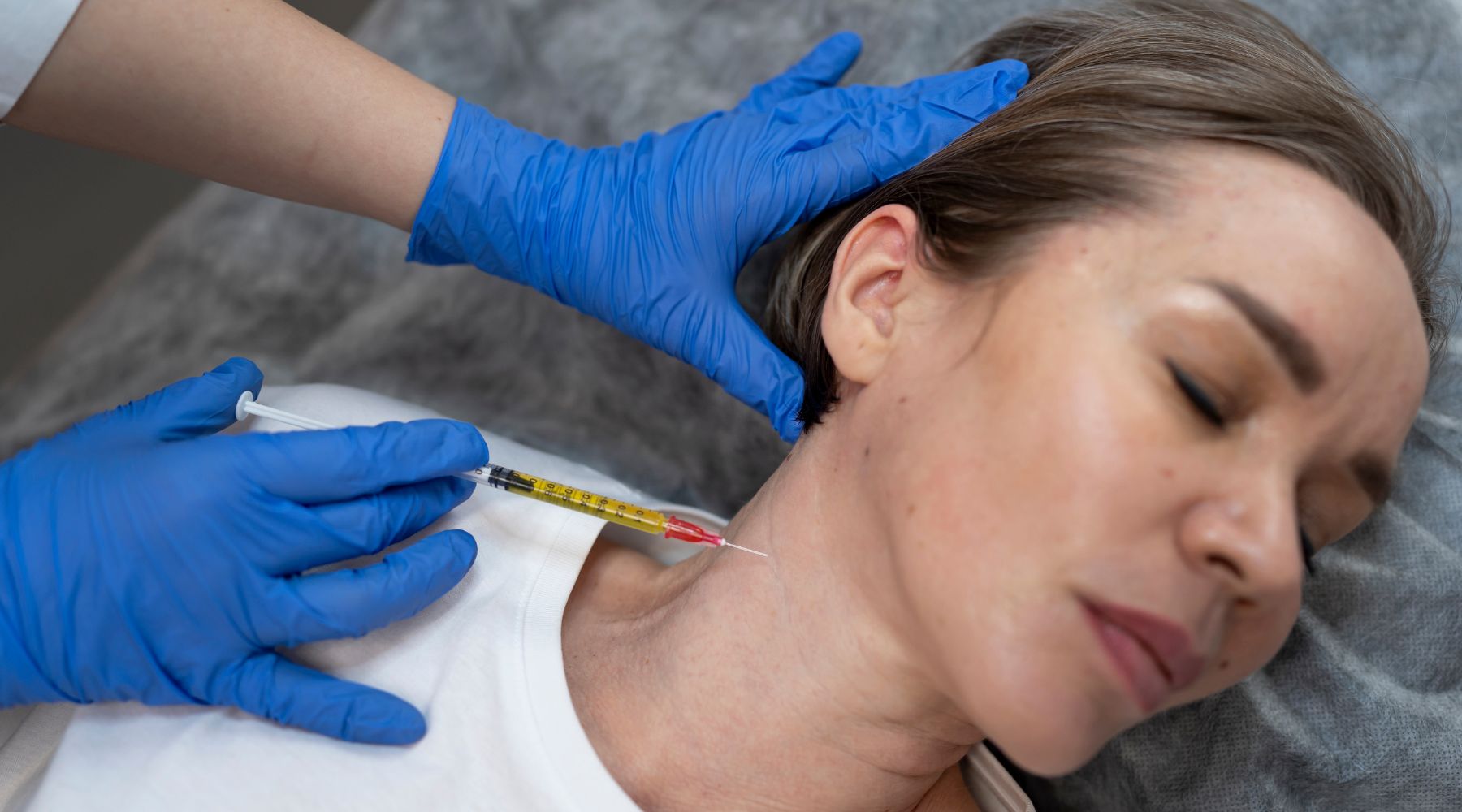Kybella has revolutionized the approach to double chin fat dissolving, offering a non-surgical solution for those seeking a more defined jawline. This FDA-approved treatment uses deoxycholic acid to break down and absorb fat cells under the chin, providing lasting results without the need for invasive procedures. However, the success of your Kybella injection treatment doesn’t end when you leave the clinic—proper aftercare is crucial for optimal results and smooth recovery.
Understanding what to avoid after Kybella treatment can make the difference between a comfortable healing process and unnecessary complications. Whether you’ve just had your first session or are planning to search for “Kybella injections near me,” this comprehensive guide will help you navigate the post-treatment period with confidence.
Understanding the Kybella Recovery Process
The recovery process after Kybella injections involves several phases, each with specific considerations. The treatment works by destroying fat cells through an inflammatory response, which naturally leads to swelling, bruising, and other temporary side effects. This process is normal and indicates that the treatment is working effectively.
The initial recovery period typically lasts 2-4 weeks, with the most significant swelling occurring within the first 48 hours. During this time, your body is actively breaking down the targeted fat cells and beginning the healing process. Understanding this timeline helps you prepare for what to expect and plan your activities accordingly.
Immediate Post-Treatment: What to Avoid in the First 24-48 Hours
Physical Activities and Exercise
One of the most important things to avoid immediately after your Kybella injection is strenuous physical activity. Vigorous exercise increases blood flow to the treated area, which can exacerbate swelling and potentially lead to increased bruising. This includes:
- High-intensity workouts
- Heavy lifting
- Running or jogging
- Hot yoga or heated exercise classes
- Activities that cause excessive sweating
Instead, opt for gentle activities like light walking, which can actually help with circulation and recovery without putting undue stress on the treated area.
Heat Exposure
Avoiding heat exposure is crucial during the initial recovery period. Heat can increase inflammation and worsen swelling, prolonging your recovery time. Specifically avoid:
- Hot showers or baths
- Saunas and steam rooms
- Hot tubs and jacuzzis
- Direct sunlight exposure
- Heating pads on the treated area
- Hair dryers on high heat near the treatment site
Touching and Massaging the Area
While it may be tempting to touch or massage the treated area, especially if it feels swollen or tender, this should be strictly avoided. Manipulation of the injection sites can:
- Increase the risk of infection
- Worsening swelling and bruising
- Potentially affect the distribution of the treatment
- Cause unnecessary discomfort
Keep your hands away from the treated area and resist the urge to check for changes by touching or pressing on the skin.
First Week: Extended Precautions for Optimal Healing
Alcohol Consumption
Alcohol should be avoided for at least the first week after treatment, and preferably longer. Alcohol consumption can:
- Increase swelling and inflammation
- Interfere with the healing process
- Thin the blood, potentially worsening bruising
- Dehydrate the body when proper hydration is crucial for recovery
If you have social events planned, consider postponing your treatment or preparing non-alcoholic alternatives.
Smoking and Tobacco Products
Smoking significantly impairs the healing process and should be avoided entirely during recovery. Tobacco use:
- Reduces oxygen delivery to tissues
- Impairs immune function
- Slows wound healing
- Increases the risk of complications
If you’re a smoker, consider using your Kybella injection treatment as motivation to quit or at least take a break during the recovery period.
Certain Medications and Supplements
Some medications and supplements can increase bleeding and bruising. Avoid or consult with your healthcare provider about:
- Aspirin and NSAIDs (unless medically necessary)
- Blood-thinning medications (consult your doctor)
- Vitamin E supplements
- Fish oil supplements
- Ginkgo biloba
- Garlic supplements
Always inform your provider about all medications and supplements you’re taking before treatment.
Facial Treatments and Cosmetic Procedures
Avoid any additional facial treatments or cosmetic procedures in the treated area for at least two weeks, or until cleared by your provider. This includes:
- Facials and chemical peels
- Microdermabrasion
- Laser treatments
- Other injectable treatments
- Professional facial massages
These treatments can interfere with healing and potentially cause complications.
Sleeping and Positioning Considerations

Sleep Position
How you sleep significantly impacts your recovery after Kybella injection treatment. According to the knowledge base {ref1}, sleeping with your head elevated is crucial for minimizing swelling and promoting proper drainage. Avoid:
- Sleeping flat on your back without elevation
- Sleeping on your side or stomach
- Using only one pillow
Instead, use multiple pillows or a wedge pillow to keep your head elevated at approximately a 30-45 degree angle for the first week.
Clothing Choices
Avoid tight-fitting clothing around your neck and chin area. This includes:
- Tight collars or turtlenecks
- Scarves worn tightly around the neck
- Jewelry that might rub against the treated area
- Helmets or headgear that put pressure on the chin
Opt for loose-fitting, comfortable clothing that won’t irritate the injection sites.
Dietary and Lifestyle Restrictions
High-Sodium Foods
Excessive sodium intake can worsen swelling and should be limited during recovery. Avoid:
- Processed and packaged foods
- Restaurant meals are high in sodium
- Canned soups and broths
- Salty snacks and chips
- Pickled foods
Focus on fresh, whole foods and drink plenty of water to help reduce swelling naturally.
Extreme Temperature Foods and Drinks
Very hot or very cold foods and beverages can cause discomfort and should be avoided initially:
- Extremely hot soups or beverages
- Ice-cold drinks
- Spicy foods that might cause facial flushing
- Foods that require excessive chewing
Stick to room temperature or have lukewarm foods and drinks for the first few days.
Activities That Can Compromise Results
Dental Procedures
Avoid non-emergency dental work for at least two weeks after treatment. Dental procedures can:
- Put pressure on the treated area
- Cause additional swelling
- Interfere with the healing process
- Be uncomfortable due to existing swelling
If you have routine dental cleanings or procedures scheduled, discuss timing with both your dentist and Kybella provider.
Air Travel
While not strictly prohibited, air travel immediately after treatment isn’t ideal due to:
- Cabin pressure changes that may affect swelling
- Dehydration from air travel
- Limited ability to maintain head elevation
- Difficulty managing post-treatment care while traveling
If travel is necessary, stay well-hydrated and try to maintain proper positioning as much as possible.
Long-Term Considerations: Weeks 2-4 and Beyond
Gradual Return to Normal Activities
As you progress through recovery, you can gradually return to normal activities. However, continue to monitor your body’s response and avoid:
- Rushing back to intense exercise too quickly
- Ignoring signs of prolonged swelling or complications
- Skipping follow-up appointments with your provider
Sun Protection
Even after initial healing, protect the treated area from excessive sun exposure:
- Use broad-spectrum sunscreen
- Wear protective clothing when outdoors
- Avoid prolonged sun exposure during peak hours
Sun damage can affect skin healing and overall results.
Signs That Require Immediate Attention
While following post-treatment guidelines, be aware of signs that may indicate complications requiring immediate medical attention:
- Signs of infection (increased redness, warmth, pus)
- Severe or worsening pain
- Difficulty swallowing or breathing
- Unusual or concerning changes in the treated area
Don’t hesitate to contact your healthcare provider if you experience any concerning symptoms.
Creating Your Post-Treatment Success Plan
Preparation is Key
Before your treatment, prepare your recovery environment:
- Stock up on soft, easy-to-eat foods
- Arrange for help with daily activities if needed
- Clear your schedule of social events for the first week
- Prepare comfortable sleeping arrangements with extra pillows
Follow-Up Care
Attend all scheduled follow-up appointments with your provider. These visits allow for:
- Monitoring of healing progress
- Assessment of results
- Discussion of additional treatments if needed
- Address any concerns or questions
The Importance of Provider Selection
When searching for “Kybella injections near me,” choosing an experienced, qualified provider is crucial for both treatment success and proper aftercare guidance. A skilled provider will:
- Provide detailed– and post-treatment instructions
- Be available for questions during recovery
- Monitor your progress appropriately
- Adjust treatment plans based on your response
Managing Expectations During Recovery

Understanding what’s normal during recovery helps you avoid unnecessary worry:
Normal Experiences:
- Significant swelling, especially in the first 48 hours
- Bruising that may worsen before improving
- Numbness or tingling in the treated area
- Mild to moderate discomfort
Timeline for Improvement:
- Peak swelling: 24-48 hours
- Gradual improvement: 1-2 weeks
- Significant resolution: 2-4 weeks
- Final results: 6-12 weeks
Maximizing Your Investment
Kybella injection treatments represent a significant investment in your appearance and confidence. Following post-treatment guidelines carefully helps ensure:
- Optimal results from your treatment
- Reduced risk of complications
- Faster, more comfortable recovery
- Better long-term outcomes
Planning for Multiple Sessions
Many patients require multiple Kybella treatment sessions for optimal results. When planning subsequent treatments:
- Allow adequate healing time between sessions (typically 6-8 weeks minimum)
- Follow the same post-treatment guidelines for each session
- Discuss timing with your provider based on your healing response
- Plan around important events or commitments
Conclusion
Successfully navigating the post-kybella injection period requires careful attention to what you should avoid during recovery. From the immediate 24-48 hour period through the weeks that follow, following these guidelines helps ensure optimal results from your double chin fat dissolving treatment.
Remember that recovery is a process, and patience is key to achieving the best possible outcome. The temporary inconveniences of avoiding certain activities, foods, and behaviors are small prices to pay for the long-term benefits of a more defined, confident profile.
By understanding what to avoid after Kybella and following your provider’s specific instructions, you’re setting yourself up for a successful treatment experience and the results you desire. The investment you make in proper aftercare will pay dividends in your outcome and overall satisfaction with your Kybella treatment.
If you’re considering Kybella injection treatment, take time to research qualified providers in your area and discuss all aspects of treatment and recovery during your consultation. With proper preparation, realistic expectations, and careful adherence to post-treatment guidelines, Kybella can be an excellent solution for achieving the jawline definition you’ve been seeking.
FAQs
1. How long do Kybella treatments last?
Kybella results are usually permanent once the fat cells under the chin are destroyed. Most people see noticeable improvement after 2–4 treatment sessions, spaced a month apart. After the fat is gone, it typically does not return if you maintain a stable weight.
2. Is Kybella injection safe?
Yes, Kybella is generally considered safe when performed by a trained medical professional. Common side effects include swelling, bruising, numbness, or mild pain at the injection site. Serious complications are rare.
3. Does Kybella work permanently?
Yes. Kybella permanently destroys fat cells in the treated area. Once these cells are gone, they do not come back. However, remaining fat cells can grow if you gain significant weight.
4. Does Kybella change face shape?
Kybella can improve the contour of your jawline and chin by reducing excess fat. It can make the lower face appear slimmer and more defined, but it does not affect bone structure.
At what age is best for Kybella?
Kybella is suitable for adults 18 years and older who have mild to moderate fat under the chin. Ideal candidates are typically those with good skin elasticity, as skin needs to tighten after fat removal. Younger adults (20s–40s) often see the best natural-looking results, but older adults can also benefit.
